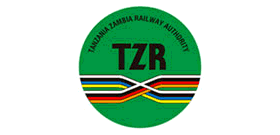 Zambia and Tanzania Secure \$1.4 Billion Investment to Transform TAZARA and Regional Transport Links
Zambia and Tanzania Secure \$1.4 Billion Investment to Transform TAZARA and Regional Transport Links
The revitalisation of the Tanzania-Zambia Railway Authority (TAZARA) has taken a decisive step forward, following the announcement by Zambian President Hakainde Hichilema that negotiations for a landmark concession agreement have been successfully concluded. Under this new arrangement, the China Civil Engineering Construction Corporation (CCECC) will inject more than US\$1.4 billion into the railway over a 30-year concession period, working in partnership with both Tanzania and Zambia to overhaul one of Africa’s most strategic transport corridors.
This substantial investment is set to upgrade TAZARA’s infrastructure and operations, with the goal of transforming the railway into a more efficient and reliable transport artery for the region. The improvements are expected to have a profound impact on the movement of goods, particularly copper exports from Zambia’s mineral-rich Copperbelt to the port of Dar es Salaam in Tanzania, and to stimulate broader economic growth across Southern and Eastern Africa.
TAZARA’s management projects that, with these upgrades, annual freight volumes will soar from the current average of 500,000 metric tons to approximately two million metric tons. This dramatic increase will not only enhance the railway’s commercial viability but also reduce pressure on regional road networks, cut transport costs, and improve the reliability of cross-border logistics.
The agreement with CCECC is part of a wider Zambian government strategy to modernise and expand the country’s transport infrastructure. Alongside the TAZARA concession, Zambia is moving forward with plans to rehabilitate the railway line operated by Zambia Railways, acquire new cargo and passenger trains, and implement measures to boost operational efficiency. These initiatives are designed to create jobs, open up new business opportunities, and ease congestion on the nation’s roads, while also strengthening Zambia’s position as a regional logistics hub.
President Hichilema’s administration has identified the railway system as a linchpin for regional integration, with a focus on key corridors such as the Lobito, Nacala, Beira, and North-South corridors. These routes are vital for connecting landlocked countries to seaports, facilitating trade, and supporting the movement of people and goods across borders.
To finance these ambitious projects, Zambia has embraced a blend of public and private investment, with a particular emphasis on Public-Private Partnerships (PPPs). Between 2022 and 2025, the government has signed thirteen PPP concession projects valued at over US\$7.6 billion. These include major undertakings such as the Lusaka-Ndola Dual Carriageway, the Lobito Corridor Railway Line, the Chingola-Kasumbalesa Road, and the Kasumbalesa Border Post. The government’s 2026–2028 Medium Term Budget Plan anticipates further PPP agreements in 2025, including the TAZARA Project and the Mpongwe-Machiya Road Project.
Significant progress is also being made in road infrastructure, particularly in the Copperbelt province bordering the Democratic Republic of Congo. Completed projects include the Chingola-Kasumbalesa, Luanshya-Fisenge-Masangano, and Kitwe-Chibuluma roads, while work continues on the Ndola-Sakania, Ndola-Mufulira-Mokambo, and Lusaka-Ndola dual carriageway projects. The Great North Road from Chinsali to Nakonde, which leads to Tanzania, is undergoing rehabilitation, with some sections nearing full completion. Roads linking Zambia to Zimbabwe and Malawi, such as the Monze-Niko and Chipata-Chadiza roads, are also being upgraded to higher standards.
In the aviation sector, the government is prioritising the rehabilitation, upgrading, and construction of provincial and strategic airports. Airports in Kasama, Chipata, Mongu, and Solwezi have already been rehabilitated, while upgrades are underway at Mansa Airport and Mfuwe International Airport. Land has also been earmarked for new airports in Choma, Chinsali, and Nakonde, with the aim of transforming provincial airports to international standards. This is part of a broader vision to position Zambia as a logistics and aviation hub in Southern Africa, creating jobs and expanding business opportunities for local communities.
For Africa’s travel and logistics industry, these developments signal a new era of connectivity and competitiveness. The modernisation of TAZARA and related infrastructure projects will not only facilitate the movement of goods and people but also enhance the region’s appeal for investment, tourism, and trade. As Zambia and Tanzania work with international partners to deliver on these ambitious plans, the entire region stands to benefit from improved transport links, greater economic integration, and a more dynamic business environment.
The TAZARA concession agreement and the broader infrastructure push reflect a growing recognition among African governments of the critical role that efficient, modern transport systems play in driving sustainable development. With continued investment and strategic partnerships, Zambia is well on its way to becoming a key logistics gateway for the continent, setting a benchmark for other nations seeking to unlock the full potential of their transport sectors.
